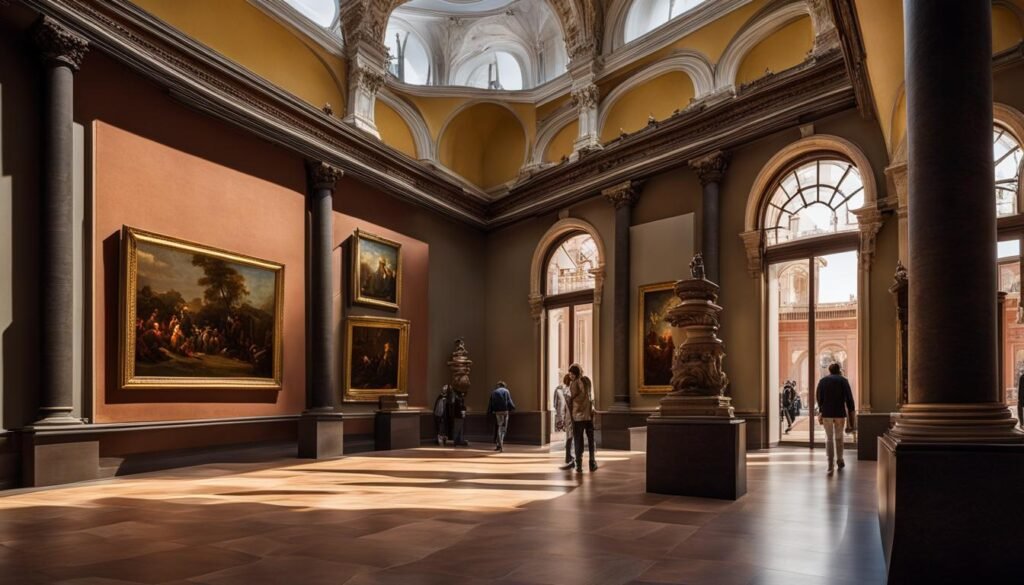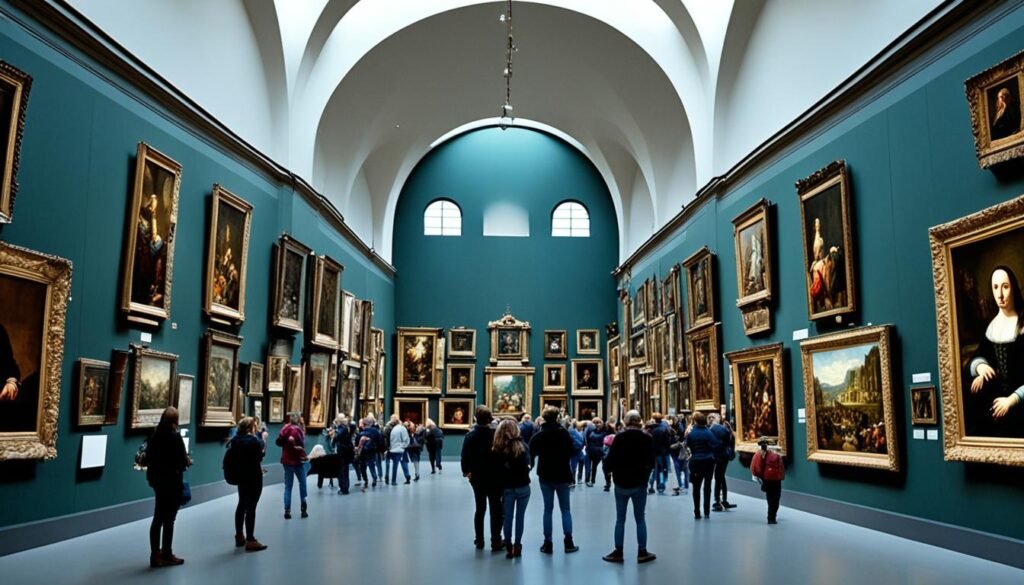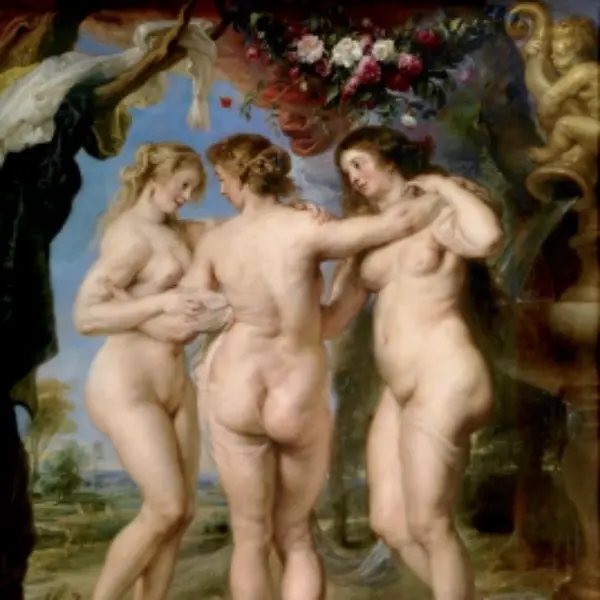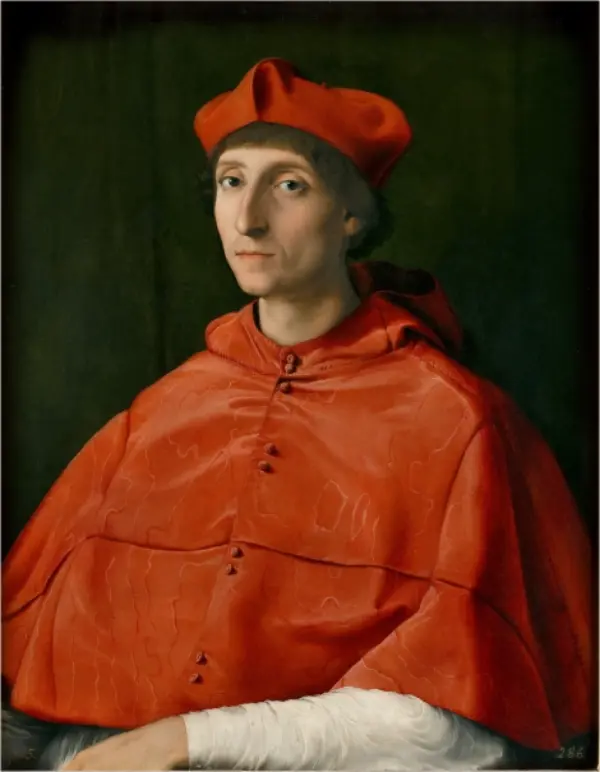Table of Contents
Are you ready to explore the realm of Spanish art through time? The Prado Museum in Madrid is your gateway. This iconic art museum is a treasure trove of inspiration.
Once inside, you’ll be enveloped in Spanish masterpieces that have lasted through the ages. With its vast collection of European paintings, the Prado highlights Spanish art’s beauty and importance.
The Prado isn’t just an art museum; it’s a peek into Spain’s history and culture. It gives visitors a chance to delve into the rich heritage of Spain. From its array of Baroque art to its magnificent architecture, each corner has a unique tale.
Ready to explore the Prado Museum’s wonders? Let’s embark on this journey into the vibrant world of Spanish art together.
Discover the Spanish Masterpieces at Prado Museum
The Prado Museum in Madrid is famous for its Spanish art collection. It covers many periods and styles. As you explore, you’ll see European paintings that have influenced art history.
At the Prado, you’ll find works by El Greco, Francisco de Goya, and Diego Velázquez. These artists have significantly impacted the art world. Their masterpieces still enchant people from all over today.
Francisco de Goya’s “Saturn Devouring His Son” is both eerie and expressive. It shows the Titan Saturn eating one of his children. This painting is a powerful display of Goya’s skill in showing deep emotions and dark themes.
“Las Meninas” by Diego Velázquez is a famous portrait that draws viewers in. Its complex scene reveals Velázquez’s precise skill and focus on detail.
El Greco’s “The Burial of the Count of Orgaz” shows his unique style with long figures and bright colors. This painting, illustrating a nobleman’s burial, highlights El Greco’s artistic innovation.
The Prado Museum provides an in-depth look at Spanish art history. Its masterpieces demonstrate the technical skill and creativity of Spanish painters. They also offer a glimpse into the cultural and historical backgrounds that shaped these works.
Spanish Masterpieces at Prado Museum
| Artist | Masterpiece |
|---|---|
| Francisco de Goya | “Saturn Devouring His Son” |
| Diego Velázquez | “Las Meninas” |
| El Greco | “The Burial of the Count of Orgaz” |
Visiting the Prado Museum is a trip through Spain’s rich art history. It is perfect for anyone, whether you’re deeply into art or just love seeing famous works. The Prado is a place you should definitely visit.
Experience the Baroque Art Collection
The Prado Museum’s collection of Baroque art takes you to a world of luxury. This art period is famous for its richness and excitement. At the museum, see the stunning artwork of the 17th century by Francisco de Zurbarán and José de Ribera.
Baroque art stands out for its deep details, complex scenes, and strong emotions. The pieces often show religious stories, historic events, and important people in a unique way. The Prado Museum lets you see the talent and creativity of these famous artists up close.
Francisco de Zurbarán is a key artist in this collection. He’s known for his religious works. His use of light and dark brings his pictures to life. José de Ribera, another important artist, is famous for his intense paintings, especially of saints and martyrs.
Walking through the Baroque collection, you’ll see vibrant colors, lively scenes, and deep feelings. These powerful paintings will make you think about the Baroque era’s beauty. You’ll understand its lasting effect on the art world.
Immerse Yourself in Spanish History
The Prado Museum is not just art. It’s a dive into Spanish history. It started as a royal museum. Now, it shows Spain’s culture and politics from the 1500s to the 1800s. Visiting the Prado is like traveling through time.
In the Prado, you see artworks that tell stories. They show important events, famous people, and everyday life in Spain. These pieces are like time capsules.
The building of the Prado is historic too. It has a beautiful design by Juan de Villanueva. With its neoclassical style, it takes you back in time.
Every piece in the Prado tells a part of Spain’s history. You’ll see kings, battles, and religion. The museum gives a full picture of Spain’s past.
“The Prado Museum is where art meets history. It’s a walk through time. You’ll see and learn about Spain’s past in a unique way.”
Exploring Spanish History Through Art
At the Prado Museum, art opens a window to history. Paintings show more than events. They reveal the hopes and beliefs of past generations.
Look closely at the artworks to see Spain’s stories. The symbols and expressions tell about the past. The museum’s collection brings Spanish history to life.
Spanish Historical Figures and Movements
The Prado tells stories of Spain’s key figures. You’ll meet monarchs and thinkers. Their stories show their impact on Spain.
The museum also highlights major artistic movements. These movements reflect Spain’s history. From the Renaissance to 19th-century art, the Prado shows Spain’s changing face.
Visiting the Prado Museum
Plan enough time for your visit to the Prado. You can join a guided tour or explore by yourself. Let the stories of Spain’s history amaze you.
Check the museum’s hours and ticket prices before you go. The Prado welcomes everyone. It’s a chance to see Spain’s history through art.

Plan Your Visit to the Prado Museum
Planning a trip to the Prado Museum? It’s key to know the open hours and ticket details. This helps you enjoy your visit to the fullest and dive deep into the art and history showcased.
Prado Museum Hours of Operation
The Prado Museum welcomes visitors from Monday to Saturday, 10 AM to 8 PM. On Sundays and holidays, it’s open from 10 AM until 7 PM. You’ll have enough time to see the vast art collection and learn about Spanish history through its exhibits.
Ticket Information
General admission tickets are 15€ to enter the Prado Museum. With these tickets, you see the permanent collection and its famous artworks. Students aged 18-25 with a valid ID get in free.
When to Visit for Free
Looking to save? The Prado Museum has free entry times. From Monday to Saturday, it’s free from 6 PM to 8 PM. Sundays and holidays offer free entry from 5 PM to 7 PM. This lets you enjoy the museum and its world-class art at no cost.
Make the most of your Prado Museum visit by planning ahead. Knowing the hours, ticket info, and free times will enhance your experience. Enjoy exploring the stunning collection of Spanish masterpieces.
Explore the Must-See Paintings at the Prado Museum
At the Prado Museum, you will find paintings that capture your imagination. These works show the amazing talent of famous artists. They also offer a deep look into their creative minds.
The Garden of Earthly Delights by Hieronymus Bosch is a standout. It is a triptych that delves into sin, temptation, and the outcomes of indulgence. The details and imagery are so vivid, they will draw you in and make you think.
Roger van der Weyden’s The Descent from the Cross is another must-see. It shows the sadness of Jesus Christ’s crucifixion. The painting’s detailed expressions of emotion highlight van der Weyden’s skill.
At the museum, you’ll also see works by Spanish greats like El Greco, Diego Velázquez, and Francisco Goya. El Greco is known for his unique, vibrant works. Velázquez’s portraits offer a peek into historical figures’ lives. Goya’s art comments on Spain’s social and political issues of his era.
Their art lets visitors dive into the minds of these famous artists. From Bosch’s symbolic pieces to van der Weyden’s emotion-filled scenes, and the distinct styles of El Greco, Velázquez, and Goya. The Prado Museum is a place full of artistic wonders.
Discover the Stories Behind the Paintings
Every painting at the Prado Museum tells a unique story. The strokes and shapes show the artist’s vision and the times they lived in. These artworks can be religious, portraits, or historical and let us see into the past.
“Art has the power to transcend time and capture the essence of a moment. At the Prado Museum, you have the opportunity to witness the convergence of art and history, where paintings serve as mirrors of the human experience throughout different periods.”
As you walk through the galleries, you’ll see Goya’s “The Third of May 1808.” It shows the terrors of war. There are also religious works like El Greco’s “The Burial of the Count of Orgaz” that take you back to past beliefs.
These pieces show the skill of the artists and the feelings, beliefs, and dreams of the people and societies they represent.

“Every stroke of the brush tells a story, and every composition holds a world of its own. Embark on a journey through the Prado Museum and discover the narratives that lay within the masterpieces.”
In Bosch’s “The Garden of Earthly Delights,” there are intricate details to explore. Velázquez’s portraits show deep emotions. The museum has many stories to tell through these artworks.
These pieces of art from the past still touch our lives today, making us think about the big ideas and truths we all share.
The Stories Unveiled:
- Religious devotion and spirituality depicted in iconic Christian artworks
- Political and social commentary through historical and portrait paintings
- Interpretations of mythology, allegory, and symbolism in various art movements
- The portrayal of daily life, cultural traditions, and societal norms through genre scenes
Knowing the stories behind the paintings helps you appreciate their art and history. The Prado Museum invites you on a discovery journey. Here, the canvases are windows to the past and bridges to our shared human experience.
| Painting | Artist |
|---|---|
| The Garden of Earthly Delights | Hieronymus Bosch |
| The Third of May 1808 | Francisco Goya |
| The Burial of the Count of Orgaz | El Greco |
| Las Meninas | Diego Velázquez |
Learn about the History of the Prado Museum
The Prado Museum has an interesting story, beginning as a place for Spanish royals. It was planned by Juan de Villanueva in the late 1700s to keep the Natural History Cabinet. King Ferdinand VII later turned it into a space to celebrate Spain’s art.
In 1819, this building became the Royal Museum of Paintings and Sculptures. Open to everyone, it stood among the world’s first national museums. This was a big step for the Prado Museum.
Since opening, the Prado Museum has been key in celebrating Spanish art. It has works from the Middle Ages to the 19th century. This shows how Spanish art has changed over time.
The museum grew bigger and got better over time to show more art. Now, it’s a top art museum globally, drawing crowds from everywhere.
Architect Juan de Villanueva: A Visionary Design
Juan de Villanueva designed the Prado Museum. He was a famous Spanish architect. He wanted a building that showed off Spanish art’s greatness and held the royal collection.
His design used Neoclassical styles, with elegant columns and a central pediment. The inside of the building is just as impressive, letting visitors fully enjoy the art.
“The Prado Museum stands as a testament to Villanueva’s architectural genius and his ability to create a space that complements and enhances the art it houses.” – Art historian Maria Martinez
Preserving Spanish Artistic Heritage
The Prado Museum started as a royal gallery but became public. Now, it works to keep Spanish art alive. It has famous works by El Greco, Diego Velázquez, and Francisco Goya.
The museum does more than just show art. It also works hard on research, keeping art safe, and teaching. This makes sure Spain’s art can be enjoyed by future generations.
Art and Culture for All
The Prado Museum wants everyone to enjoy art. From the start, it was meant to be open to everyone. It’s a place full of beauty and Spanish art’s power.
There are different shows, classes, and events for all. No matter if you love art, history, or Spanish culture, the Prado Museum has something special for you.
Visiting the Prado Museum lets you see Spain’s art history. You’ll see the amazing creativity and lasting value of Spanish art.
Uncover the Art of Hieronymus Bosch
Hieronymus Bosch was a famous Dutch painter from the late Middle Ages. He is known for his unique and mysterious paintings. One of his most well-known works is The Garden of Earthly Delights. This piece is on display at the famous Prado Museum. It was painted between 1490 and 1500 and is a captivating triptych oil painting. It tells a story of how society falls apart.
The Garden of Earthly Delights grabs your attention with its detailed and symbolic art. Bosch painted mythical creatures and complex landscapes. His style makes this painting truly magical. The triptych format draws you in, making you explore scenes from paradise to destruction.
In The Garden of Earthly Delights, Bosch explores deep themes like desire and the fallout of giving in to temptations. He uses symbols and stories to make us think. This painting reminds us of the challenges and dangers in life.
Bosch’s wild imagination is clear in The Garden of Earthly Delights. The details and bright colors pull you into a world that is both fascinating and a bit disturbing. By looking into this painting, we can understand Bosch’s unique views and his take on human nature.
The Symbolism of The Garden of Earthly Delights
The triptych setup of The Garden of Earthly Delights shows three different stories. The left panel shows the creation of the world and the Garden of Eden. It represents the pure start of humanity. The middle panel shows a world of fantasy and excess, highlighting the dangers of too much desire. The right panel gives us a scary view of the results of human sins, with scenes of hell and monstrous beings.
Bosch’s Artistic Legacy
Hieronymus Bosch’s special way of painting and his big imagination still amaze people today. His art goes against old traditions and shows the complex side of human experiences. His use of detailed symbols makes his work still meaningful and interesting.
In The Garden of Earthly Delights, Bosch offers a fascinating look at human behavior. The beautiful art and deep messages in this masterpiece still attract and inspire art lovers. Visiting the Prado Museum lets you see the incredible skills and imagination of Hieronymus Bosch.
Experience the Emotional Power of Roger van der Weyden’s Art
Dive into Roger van der Weyden’s art world. See the deep emotions of his masterpiece, The Descent from the Cross. This extraordinary artwork, painted between 1399 and 1464, is in the Prado Museum.
“The Descent from the Cross” shows Roger van der Weyden’s great skill in depicting human emotions. His careful composition and lighting create a scene filled with horror, grief, and worry.
The figures around Jesus’s body show deep sadness. Their faces show intense sorrow. The careful placement of figures makes the painting emotionally powerful.
Roger van der Weyden was unmatched in showing human feelings. In The Descent from the Cross, we see his talent. He captures moments deeply.
Key Details of Roger van der Weyden’s “The Descent from the Cross”
| Artist | Roger van der Weyden |
|---|---|
| Title | The Descent from the Cross |
| Year | 1399-1464 |
| Medium | Oil on oak panel |
| Dimensions | 220 cm × 262 cm (87 in × 103 in) |
| Location | Prado Museum, Madrid |
Standing before The Descent from the Cross, you’ll feel deep emotions. This work shows art’s power to convey feelings. Experience Roger van der Weyden’s emotional art at the Prado Museum.
Marvel at the Brilliance of Spanish Masters – El Greco, Diego Velázquez, and Francisco Goya
The Prado Museum in Madrid shows off the talent of Spanish masters like El Greco, Diego Velázquez, and Francisco Goya. El Greco is known for his long figures and bright colors. His paintings, like “The Burial of the Count of Orgaz” and “The Annunciation,” show his unique style and deep emotions.
Diego Velázquez is a famed Spanish artist, known for his lifelike portraits. His famous work, “Las Meninas,” shows the Spanish royal court with incredible detail. Velázquez captures the realness of his subjects, their faces, and their unique traits like no other.
Francisco Goya is a key artist in Spanish art, famous for his moving and challenging paintings. His pieces, such as “The Third of May 1808” and “Saturn Devouring His Son,” showcase Goya’s skill in addressing hard topics and strong feelings. His work reflects on society and human themes that are always relevant.
At the Prado Museum, you can see the amazing work of these Spanish artists. Their art has left a mark on the world, inspiring and fascinating those who love creativity. The Prado Museum is a place where art lovers go to dive into Spanish art and genius.
Source Links
- https://www.britannica.com/list/20-paintings-you-have-to-visit-at-the-museo-del-prado-in-madrid
- https://www.contexttravel.com/blog/articles/prado-museum-guide
- https://showcasenow.showcasecinemas.com/film/the-prado-museum-a-collection-of-wonders/
THE COLLECTION





























